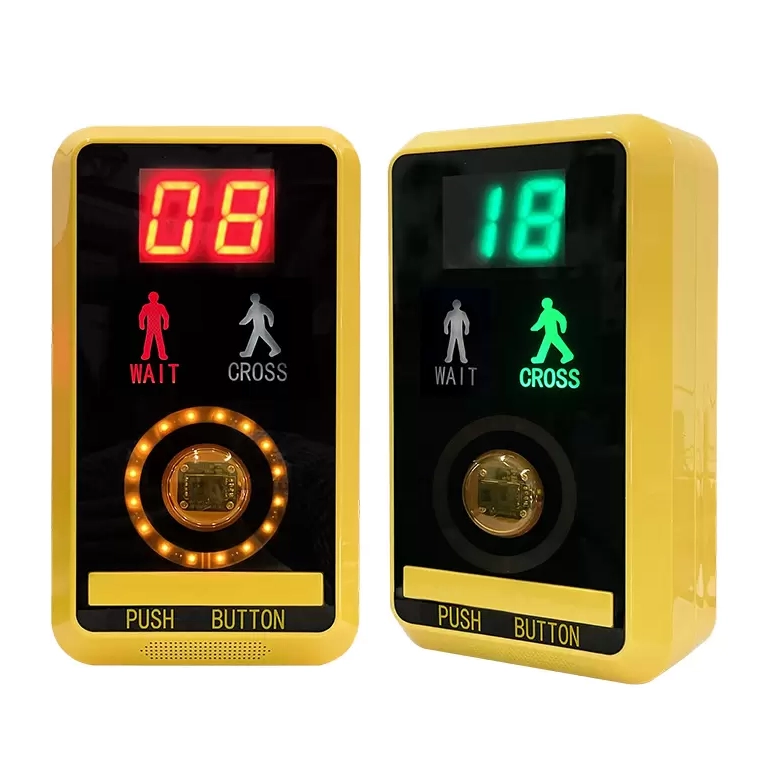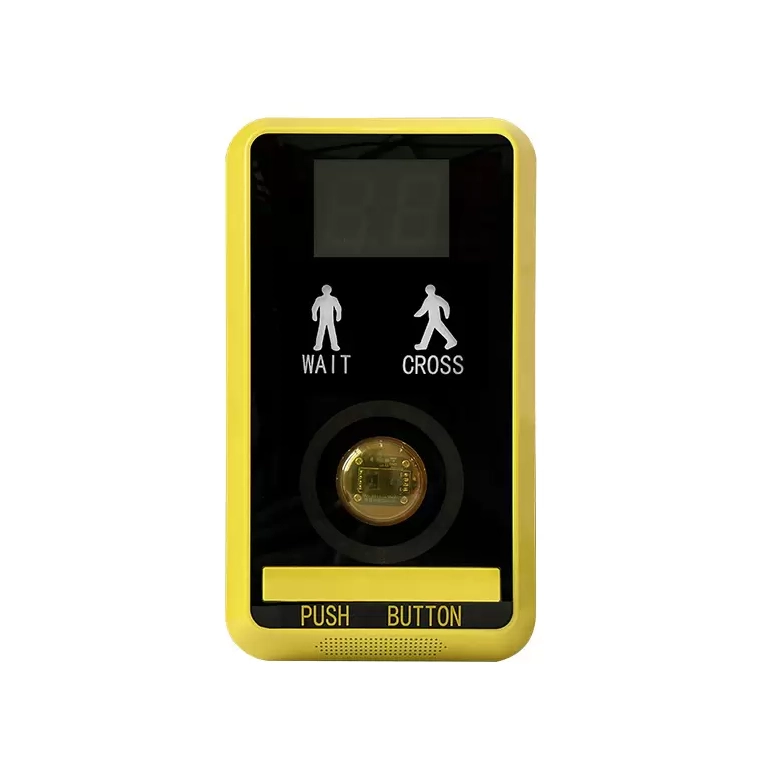Home > News > Industry News > Unlocking Peak Performance: How to Maintain Induction Pedestrian Crossing Push Buttons
Unlocking Peak Performance: How to Maintain Induction Pedestrian Crossing Push Buttons
Pedestrian safety is a critical aspect of urban traffic management. FAMA Traffic’s induction pedestrian crossing push buttons offer advanced functionality, integrating countdown displays, audible signals, mechanical buttons, touchless sensors, and pedestrian guidance patterns into a single device. Proper maintenance is essential to ensure these devices perform reliably, enhance pedestrian safety, and support efficient traffic flow.
In this article, we explore maintenance strategies from multiple angles, including device functionality, environmental adaptation, smart system integration, predictive monitoring, personnel training, and real-world applications, ensuring a comprehensive understanding for traffic authorities and maintenance teams.
1. Technical Maintenance: Ensuring All Functions Operate Flawlessly
Countdown Display
Inspection: Regularly check LED brightness and visibility.
Cleaning: Remove dust and debris that may obscure numbers.
Software Updates: Ensure countdown synchronization with traffic signals.
Audible Pedestrian Signal
Test voice prompts and audio clarity across all volume settings.
Adjust audio for daytime/nighttime, and for high-noise environments like industrial areas.
Verify multi-region language support if deployed internationally.
Mechanical Pushbutton & Touchless Sensor
Inspect for wear, sticking, or misalignment in mechanical buttons.
Test touchless sensor responsiveness and range.
Confirm pedestrian pattern indicators activate correctly, guiding safe crossings.
Outcome: Ensures that all five integrated functions operate smoothly for maximum safety and efficiency.

2. Environmental Adaptation: Optimizing for Diverse Conditions
Pedestrian push buttons must adapt to various urban environments:
Urban centers: Moderate audio, clear countdown display for dense pedestrian traffic.
Industrial zones: Higher audio to overcome ambient noise, robust sensor calibration.
Commercial districts: Adjust prompt timing and display brightness for heavy pedestrian flows.
Nighttime settings: Increase LED visibility and ensure voice prompts are clearly audible.
Maintenance Tip: Perform routine checks for weather resistance, dust accumulation, and moisture ingress to maintain consistent performance.
3. Intelligent System Integration and Compatibility
FAMA Traffic devices support intelligent switching (learning, triggering, communication) and are compatible with major traffic control systems.
Switching Functionality: Verify the device automatically transitions between modes as needed.
System Interoperability: Test connections with signal controllers from different brands.
Output Signals: Check standard switch signal output for accuracy.
Benefit: Ensures seamless integration, reducing the risk of signal conflicts or pedestrian safety lapses.
4. Multi-Period Control: Fine-Tuning Audio and Display
Devices support time-based configuration for optimal performance:
Adjust audio volume and prompts according to the time of day.
Configure visual cues for peak pedestrian traffic periods.
Align countdown display timing with real-time signal cycles.
Maintenance Strategy: Regularly validate settings to ensure compliance with pedestrian flow and traffic regulations.
5. Firmware and Mobile App Optimization
Bluetooth Connectivity: Regularly update firmware for improved sensor accuracy and countdown precision.
Mobile App Customization: Use the app to adjust language, broadcast content, and system diagnostics.
Proactive Monitoring: Detect anomalies early via app alerts to prevent failures.
Result: Enhances operational reliability and allows remote maintenance and monitoring, reducing manual inspection needs.
6. Data-Driven Predictive Maintenance
Integration with smart systems enables data collection:
Track frequency of button usage to anticipate wear.
Analyze activation patterns to identify sensor drift or response delays.
Schedule proactive maintenance based on actual device usage and environmental factors.
Impact: Minimizes downtime and ensures continuous peak performance.
7. Personnel Training: Empowering Maintenance Teams
Well-trained personnel are essential for consistent performance:
Familiarize teams with device functionality, modes, and diagnostic tools.
Establish maintenance routines for inspection, calibration, and firmware updates.
Encourage timely reporting of irregularities for quick corrective action.
Outcome: Ensures devices remain reliable, safe, and efficient across all intersections.

8. Safety and Traffic Flow Benefits
Proper maintenance provides measurable advantages:
Enhanced pedestrian safety: Countdown displays, voice prompts, and touchless sensors work reliably.
Improved traffic flow: Predictable pedestrian behavior prevents vehicle delays.
Global adaptability: Maintains multi-region deployment capabilities.
Extended device lifespan: Reduces wear and tear, protecting the city’s investment.
9. Real-World Applications and Success Stories
Pilot urban deployments of FAMA Traffic push buttons demonstrate significant reductions in red-light crossing incidents.
Intersections with maintained devices see 25–30% fewer pedestrian-related incidents in six months.
Data collected supports adaptive traffic management and informed urban planning.
10. Future-Proofing Pedestrian Crossings
FAMA Traffic devices are designed to evolve:
AI integration: Predict pedestrian behavior to prevent potential conflicts.
5G connectivity: Supports smart city applications and traffic analytics.
Scalable deployment: Adapts to growing urban areas and complex intersections.
Benefit: Maintains long-term relevance, safety, and efficiency for pedestrian infrastructure.
Conclusion
Maintaining induction pedestrian crossing push buttons from FAMA Traffic involves multi-dimensional strategies:
Technical inspections
Environmental adaptation
Firmware and mobile app optimization
Intelligent system integration
Data-driven predictive maintenance
Personnel training
By adopting a holistic maintenance approach, cities ensure devices operate at peak performance, safeguard pedestrians, optimize traffic flow, and extend the life of smart traffic infrastructure. Properly maintained push buttons are not just devices—they are critical components of safer, smarter urban intersections
